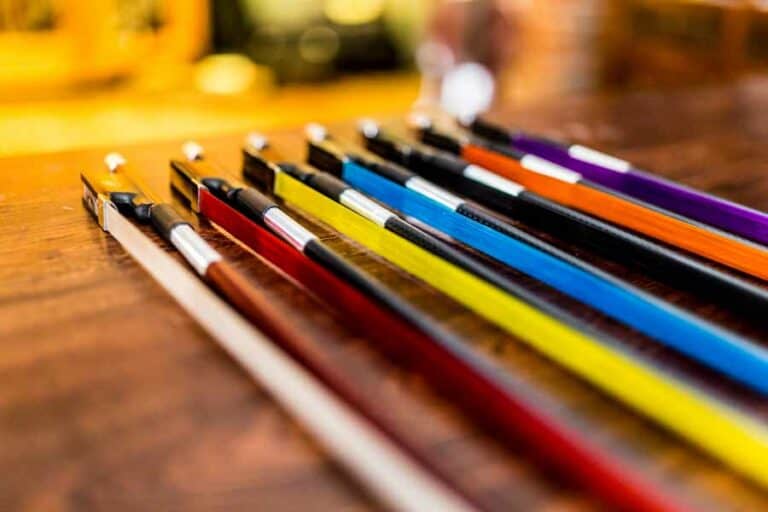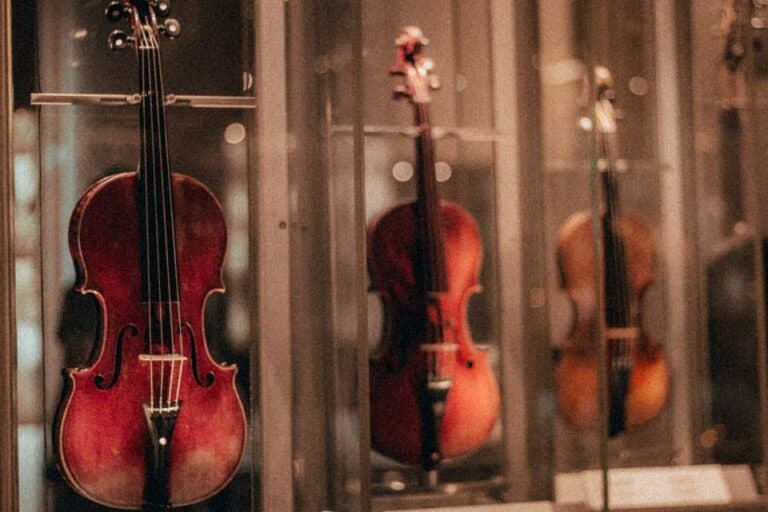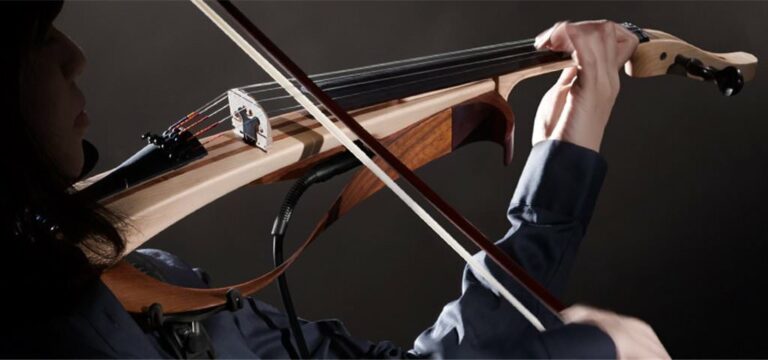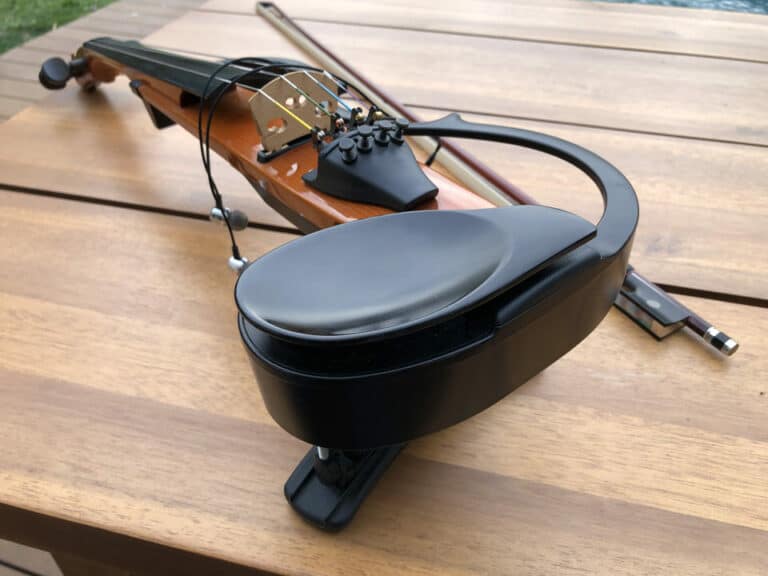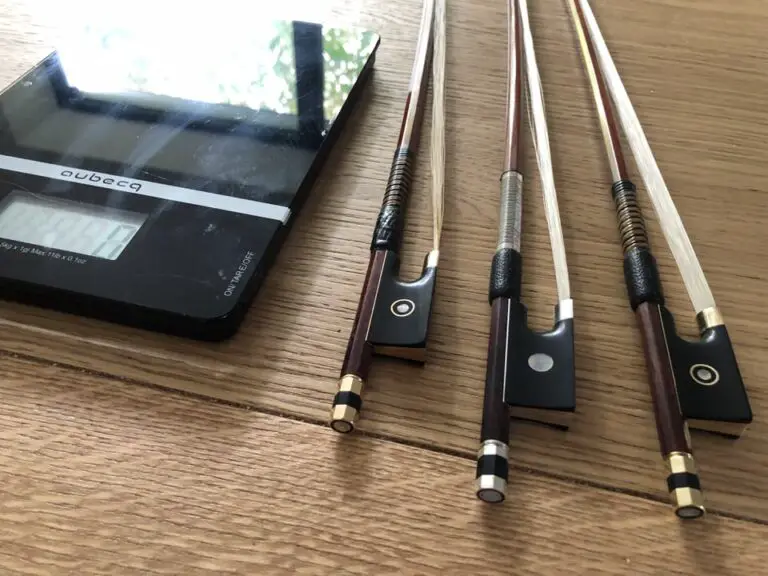How to Play in Tune on the Violin: Secrets Revealed
Well, everybody knows that the violin doesn’t have any frets and that playing in tune is a real challenge on this instrument. Unlike on the guitar, there isn’t a one-inch long box, or cell if you will, to put your finger in to produce a sound. Without frets, it the exact position of your finger itself that gives the right pitch. And the fingerboard is so tiny that even slight movements of the tip of the fingers, or squeezing the flesh of the tip, will change the pitch! If I go on, on the upper positions, the space allowed to put a finger is even proportionally shortened… So it is commonly said that all violinists play out of tune, only some less so than others!
But should id deter you? Is it possible to play the violin in tune without sweat and tears work?
- Get the feeling of the fingerboard, the position of the hand, and the distance covered in shifting;
- The ear must guide and control at all times;
- The shape of the hand (the hand playing octaves);
- The ability to correct instantly the position of the finger to adapt to the required note and even correct your motion to land in the correct place altogether.
It is important to understand how playing the violin works, both on the instrument and in the brain, to master intonation as quickly as possible. Yes, there is a way to avoid losing time in that learning process.
How to get a good intonation on the violin?
Yvan Galamian compares the left hand to a blind person or someone in the dark. Unlike the guitar where you can watch your hand and the frets, your eyes are of no need to play the violin. The fingerboard is too tiny, and the correct place to put your finger needs to be too exact for your eyes to be of any help.

So, your left hand has to find a guide to know where it is, whether with the neck of the violin in the lower position, or with the body, in the upper position.
The shape of the hand
The hand itself has to keep the same shape as a structure. That shape mustn’t vary as it is the base for intonation. The shape of the hand consists of a hand playing octaves. First and forth fingers stop adjacent strings in an octave shape.
Now that the first and fourth fingers are in there place on the fingerboard, other fingers have only two positions: round or extended.
This is very important, as the brain has only to remember and acquire reflexes on a binary case (round vs extended), and not all the micro position possibilities in that space.
Playing, up the neck, the first and fourth fingers are closer and closer together but the shape of the hand remains, and the round or extended position of the second and third fingers remains valid.
So, the left hand must be trained playing octaves uptimes the fingerboard, without changing its position, to the sixth position at least. As an exercise, M. Galamian proposes that the fingers must be on the strings even if unheard to keep the frame (for example the fourth) even on passages that don’t require that.
The double-contact of the hand with the violin
As the hand is blind, we have to teach the mind. That is why the mind has to get help from the feelings of the fingers and of the hand.
To find its way, the hand must have double contact with the fingerboard. One contact is not enough. On the lower positions, this double contact consists of the thumb and the side of the first finger. The neck shouldn’t be squeezed, and contact should be light. A single contact can be used for vibrated expressive notes, though. But touching the neck in two places is important for intonation. After the third or fourth position, the hand itself is in contact with the body of the violin, replacing the side of the first finger. When the thumb and the hand both touch the violin, the base of the first finger shouldn’t touch the neck anymore. Indeed, a triple contact can be detrimental to the technique.
The principle of double-contact is crucial to direct oneself on the fingerboard.
The different double-contacts change between positions and that will help you with shifting. Changing positions is always dangerous as you leave known grounds, slip up or down the neck, to land instantly to play in new grounds. For example, if you have a large hand as I do and change position between the first and the third, you know that you will slide and hit the body of the violin with the palm of your hand, you will feel that in your head before shifting, and you will land on the correct spot. So you will associate positions and double contact and eventually get the feeling of the distance covered in shifting.
So if you keep the frame of the hand and use double contact with the neck or violin, you will feel more at ease and less lost in the darkness of the violin fingerboard. You will feed your brain with more information to remember where the fingers should be and to acquire reflexes.
Your ear must guide you and control your hand at all times
We’ve seen that the shape of the hand and the contacts are crucial, but how do you know you are at the correct place?
Your ear is the only judge. That is why the ear should be exercised and trained. Some people are more gifted than others. If someone doesn’t have any ear, then let’s be blunt, he or she should stop violin playing. But for any other people, the ear is an ability that can be trained by listening to music, getting the help of a piano, exercised in music schools, and so on. A beginner violinist will have the help of his or her teacher who will invariably say:” too flat”, or “too sharp”!
So your teacher will be an ear for you at the beginning, but less and less so as progress occurs. Your brain has to pick up the task and correct instantly your fingers, that is to say, gaining reflexes where your consciousness won’t play any part.
As Menuhin and Yankelevitch say, it is crucial that when you learn, you keep always alert and aware of your intonation. Otherwise, you will become deaf to your own notes and be acclimatized to your own bad playing. As Menuhin put it, you get used to your own odor. So that is bad. In the learning process, being fully alert is crucial.
So, when the ear finds that a note is off, how should we course correct?
How to correct bad intonation on the violin?
This is where Yvan Galamian and Yuri Yankelevitch differ. M. Galamian says that a violinist must gain the ability to correct instantly the position of the finger to adapt to the required note. This adaptation must be a reflex and immediate. So, basically, you play the note and stop the string, check for correct pitch, then correct the position of the finger on the fingerboard.
Alright, that seems fair. But M. Yankelevitch adds: this can’t be accomplished on fast passages, you just don’t have enough time to correct the position of the fingers. So, the faster you play, the worst intonation you get. And you end up playing out of tune. So, to play in tune, you shouldn’t just micro-adjust the placement of your fingers (as a reflex) you should instead practice what got you there and acquire the correct placement instead (as a reflex). This is particularly important for shifting (practice a perfect shift and not adjusting afterward the landing note). And playing fast, your intonation will be significantly better.
So out-of-tune playing has nothing to do with the hand but rather with the lack of correcting the hand with the ear. So that’s what is meant by being used to bad intonation: to never correcting the position of the fingers, to never acquire that reflex.
The use of the vibrato is to help to correct the pitch of the note by shading the vibrato direction into the correct intonation.
How to work out a good intonation on the violin
Now that we’ve seen the role of the hand and of the ear, let’s find out how to develop a good intonation with exercises.
Some tips to play in tune on the violin
You know a lot, already, but now, I want to share with you some details that will comfort you about the difficulties of playing in tune on the violin and how to overcome them.
To develop the ear, Carl Flesch proposes that his students play an Etude by Rode. They must play slowly and hold each and individual note long enough to have the certainty to play in tune. The pitch should be exact. Of course, they have to exert the closest scrutiny, avoid vibrato, and use the closest open strings for comparison. After several hours of work, a strange phenomenon occurs. The students get the impression that they play far more out of tune than before… SO we can say that their ear has been sensitized. Now, the students can make intonation judgments and corrections within seconds, even if the corrections are still noticeable.
” The improvement of the acuteness of the earring, achieved through arduous work, would be lost immediately, if, by careless listening, his ear could get used to accepting imprecise numbers of vibrations.”
Know that playing scientifically in tune is impossible
There is no such thing as playing perfectly in tune on the violin: this is truly impossible. Here is why. The great Carl Flesch has given a complete description of what it actually means scientifically to play perfectly in tune.
Two notes are on the fifth position are separated by approximately 60 vibrations. The spatial distance between the A and Bb is 2 millimeters. Therefore, a vibration equals 1/30 millimeters. If we consider that my finger plays the A in tune, in order to play the Bb, I would have to place y finger in a location that is accurate to the 1/30 mm. I could why not, press the string with an object of a width of 1/30, but how could I with a finger which, at its tip, measures 10mm? Even if we consider that I place my note correctly by chance, in a succession of notes, such as a scale, this becomes an impossibility.
That shouldn’t deter you. You should, on the contrary, have a lighter mind about it.
Playing in tune is relative
Now that we have seen that the violin can’t be played in tune in a truly scientific way, let’s explain why the mere concept of in tune is relative. I am not going to give too many details here as this is some pretty advanced material.
In a nutshell: the octaves consist of vibrations that are multiples in half or double. But the interval in between is divided into 12 half steps, starting from J.S. Bach. If we divide mathematically in this way, the third is not perfect, nor the fifth. But the irregularities have been divided into twelve, making them small and barely noticeable. This is called the “well-tempered keyboard”.
SO, starting from the time of J.S. Bach, the keyboards are tuned that way. But the violins don’t have to use the tempered intonation but the natural or expressive intonation instead. Half-step intervals can be squeezed. Thirds can be played fully and then fifths. The violinist has to follow the musicians he or she plays with. The intonation can differ when playing with a piano or in a duet with another violin.
Tempered intonation vs natural intonation. Intonation must match other instruments and accompaniment. The ear has to be trained, and intonation must be able to follow each system or a bit of both.
Lastly, being in tune lies in the hears of the listener. The more the listener and/or the violinist will develop his ear, the richer the intonation and the understanding of it.
In conclusion
The habit of immediate and imperceptible micro-adjustments is crucial. The musician must be extra sensitive and be able to adapt on the fly instantly to the need of the note. The vibrato plays a great role in intonation in that with its oscillation it can help the finger to move slightly up or down in the desired manner for the needed adjustment.
Extreme adaptability is the only way to play in tune. The ear must be trained to detect the slightest difference between the desired note and the position of the finger. Correction must happen instantly.
The motion of the finger must be done again to land on the proper place for fast movements to be executed cleanly and in tune as with speed, adjustments are impossible.
As a result, a violinist can play in tune with a badly tuned instrument. The violinist will be used to perform micro-adjustments and will gain great self-confidence in concerts or exams if a string can’t stay well-tuned.
We’ve talked about the shape of the hand. Leonid Kogan, my teacher’s teacher, always insisted that his students play scales. Once he was rehearsing with Siatoslav Richter, Kogan heard that the whole class was listening secretly behind the closed door (who wouldn’t). He stopped playing, opened the door, and said to the students: “scales, scales!” as to tell them to stop losing time and go back practicing. Scales are a structure for the hand, like frets. Scales are a must for intonation: Heifetz insisted all his students be able to play any scale at any moment in any tonality. Scales should be ready at any time.

